Farm Income Shows Strong Rebound in 2025
Farm income is looking healthier this year. According to the U.S. Department of Agriculture’s Economic Research Service, net farm income for 2025 is forecast at about $179.8 billion, a jump of more than 40 percent compared to 2024. Adjusted for inflation, that’s still an impressive 37 percent increase. Net cash farm income is expected to reach $180.7 billion, which is up more than 25 percent in real terms.
Much of this rebound is tied to government payments, especially disaster assistance programs responding to the setbacks producers faced in 2023 and 2024. Crop receipts are projected to decline, but livestock, poultry, and other animal product sectors are making up the difference and pushing overall profits higher.
Of course, not everything is smooth sailing. Farmers are still navigating rising interest rates on debt, volatile input costs, and shifting policy conditions. These factors leave plenty of uncertainty even in a year of growth.
Where Growth Is Converging: Key Locations and Hubs
Geography is shaping agriculture’s future just as much as policy and markets. One of the most notable developments this year is Merck Animal Health’s $895 million investment in De Soto, Kansas. The project expands biologics manufacturing and R&D labs and is expected to create more than 200 new full-time jobs.
Kansas City continues to stand out as a hub for animal health. The Animal Health Corridor, which stretches from Kansas to Columbia, Missouri, is now home to more than 300 companies in veterinary medicine, diagnostics, and pet food. Together, they account for a significant share of both U.S. and global output.
Beyond the Midwest, established corporate headquarters across Minnesota, Illinois, Missouri, Indiana, California, and Arkansas remain crucial centers of strategy and decision-making. These regions anchor the industries of crop science, food production, and commodity processing.
Labor Demand Trends: Executives and Management Needed
Job posting data for 2025 is still being collected, but several patterns are already clear. The strength of the livestock and animal product sectors is creating steady demand for executives in operations, regulatory compliance, supply chain management, and animal health.
Capital projects are also spurring hiring. Merck’s expansion in De Soto is one example, and the Kansas City Animal Health Corridor has been actively promoting career opportunities and building out programs to support recruitment. Growth in vaccine, biologics, and diagnostics manufacturing means more openings in processing, R&D, and oversight roles.
Although exact numbers by job title aren’t yet available, the connection between new investment and leadership hiring is strong. Executive and management opportunities are clustering in geographic hot spots: animal health in the Midwest, ag-biotech in North Carolina’s Research Triangle, and specialty crops in California.
Policy, Market, and Risk Trends Into 2026
Looking toward late 2025 and into 2026, four key forces are shaping the industry.
Policy volatility is front and center. The current income rebound is heavily supported by government programs. If those supports shrink, many producers could feel financial strain.
Input and supply chain costs are another pressure point. Feed, fertilizer, labor, and energy remain among the largest expenses, and disruptions in transportation or inflation could quickly erode profit margins.
Technology and innovation continue to reshape the sector. From automation to biologics and precision agriculture, producers are investing in tools that help them do more with less. Leaders who can guide teams through this kind of transformation will be in demand.
Market cycles, particularly in livestock and protein, are also worth watching. Current conditions suggest tight supplies and stronger prices, but disease outbreaks, shifts in consumer demand, or export disruptions could change things rapidly.
Implications for Leadership and Strategy
For boards and executive teams, these trends raise important questions about talent and planning.
Leaders with experience navigating complex regulatory landscapes especially in animal health, biologics, and export markets will be essential. Companies scaling facilities or investing in modernization projects will need executives who can handle operations, compliance, and large-scale project delivery.
Geography will matter more than ever. With investments clustering in specific regions, boards will need to consider how location influences both the depth of the talent pool and the competition for it. Relocation incentives and regional cost factors will play a bigger role in hiring strategies.
Finally, risk management should sit high on every leadership agenda. From volatile input costs to supply chain disruptions and policy uncertainty, the companies that plan ahead will be best positioned to weather shifts in the market.












